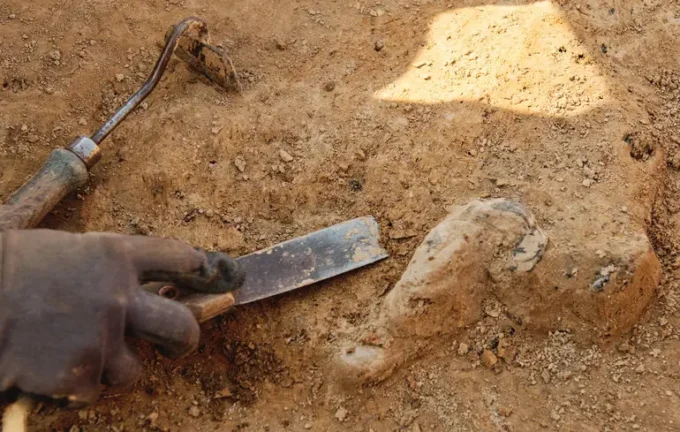Discovery of a Unique Hellenistic Elite Residence in Northern Macedonia: New Archaeological Insights into the Balkan World

Recent archaeological excavations in North Macedonia have unveiled an intriguing chapter of Hellenistic influence on the Balkan Peninsula. During extensive restoration works at the local Museum of the National League near the village of Mlado Nagorichane, researchers discovered a remarkable elite residence dating back to the late 4th and 3rd centuries BCE. This site is now recognized as the northernmost example of Ionic architecture within the entire Hellenistic world, preserving in its structural details the grandeur and craftsmanship characteristic of ancient Greek civilization. Situated atop the Gradishte hill, the residence resembles a miniature ancient acropolis, featuring a central courtyard surrounded by a colonnade and an internal open space. The interior was richly decorated with painted plaster, indicating the high status of its inhabitants. Functional areas included a bath with tiled flooring and plumbing systems, highlighting sophistication in domestic infrastructure. Among the most valuable finds were well-preserved Ionic capitals and bases, demonstrating advanced architectural techniques and the local adoption of Mediterranean stylistic elements. Lead researcher Dejan Djorjievski emphasized that these architectural remains represent the northernmost known examples of such classical elements in the Hellenistic sphere. The discovery confirms broader trends of Hellenization reaching deep into the Balkan interior, far beyond the coastal colonies. Artifacts unearthed at the site include imported ceramics from the Western Mediterranean, Faliscan amphorae, and local pottery from the 4th–3rd centuries BCE. Notably, fragments featuring graffiti with Greek inscriptions—one in vulgar Greek—offer a rare glimpse into everyday literacy and social interactions at the frontier of Hellenistic influence. Remnants of large stone walls suggest earlier high-status structures, possibly part of an even older settlement. Archeological layers reveal fortifications, a stylobate platform, and a carved sanctuary in the rock—paralleling similar complex sites in Greece—indicating a complex ritual and cultural setting. The findings demonstrate that Hellenistic cultural influence was transmitted not merely through coastal trade routes but also through local political and social infrastructures. The Museum of the North Macedonian League, which initiated this excavation, is gaining recognition for its significant discoveries. Future excavations aim to explore lower layers, analyze artifacts in detail, and develop digital reconstructions to illustrate the life and social hierarchy within this prestigious residence. These discoveries contribute significantly to our understanding of the spread of Greek culture into the Balkans, emphasizing the region’s role as a vital part of the larger Hellenistic world, far from the traditional centers of Greek civilization.

